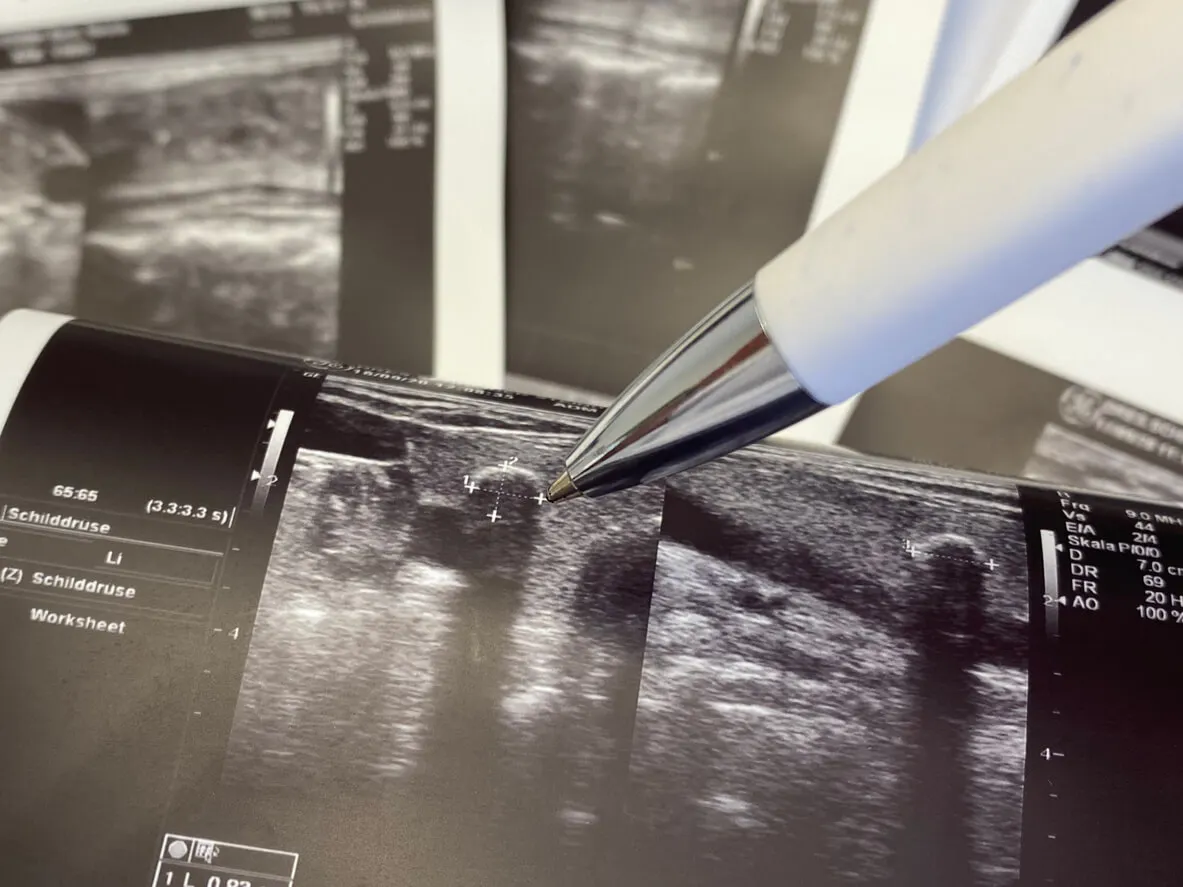Injection of Ultrasound-Guided Fillers: Uses and Benefits


Reviewed and approved by the nurse Leidy Mora Molina
The resources used in the field of aesthetics are frequently improved on. This is the case of ultrasound-guided fillers, a way of injecting substances into the skin following the guidance of an ultrasound scan.
Thanks to this kind of technique, the probability of error during skin beautification procedures is reduced. The proposal allows specialists to precisely monitor the substances that are introduced into the person’s face, to avoid incidents during the procedure and to closely monitor the assimilation of the treatment.
What are ultrasound-guided fillers?
An explanation from the Mayo Clinic indicates that facial fillers are substances injected into the skin to smooth wrinkles and make them less noticeable. They’re performed in outpatient procedures and under local anesthesia.
The ultrasound-guided feature refers to the fact that the infiltration is monitored with ultrasound. Due to the reproducible quality, the physician visualizes the evolution of the injected material in real time.
This is stated in an article (mainly in Spanish) in the journal Cirugía Plástica Ibero-Latinoamericana, where they highlight that ultrasound also helps to classify the substances according to patterns. This point helps both doctors and patients, taking into account that later on they may require new injections, and it’s essential for getting to know the incompatibilities.
Since it’s a resource applied to the face, it’s necessary to bear in mind that the blood vessels in this area respond to patterns that would be difficult to locate without imaging techniques. Botulinum toxin, hyaluronic acid, liquid lifting, and any kind of injectable filler can be observed with ultrasound.

Benefits of ultrasound-guided filler injections
In addition to the information about the facial anatomy and skin demands, with this novel method the expert administers the fillers with the guarantee that there’ll be no mistakes in the area to be treated. Ultrasound-guided facial filler injections have more benefits, which we would now like to tell you about.
Regulated doses
Visualizing the infiltration area means the physician will need less filler material, because by providing the dose in the specific area, the process is optimized.
Identification of the area to be infiltrated
The expert finds it easier to work with the guidance of the ultrasound. By means of the images, they can locate the area to be filled. This is much more advantageous for harmonious and pleasing effects to the eye.
Minimizes risks
Once the specialist can see the position of the blood vessels in the ultrasound, they can continue with the guarantee that the injection won’t cause side effects, such as hematomas. It also minimizes the danger of infiltrating arteries. The latter has serious consequences: necrosis of the cutaneous tissue or clot formation.
Visualizing the injected material
As the filler is injected, the process is made visible with ultrasound guidance. This same tool is useful for later locating the material and verifying if it has integrated into the tissue without any problems.
It simplifies the diagnosis if there are complications
This tool guides the resolution of post-injection emergencies. If an allergy or inflammation occurs, ultrasound helps the expert locate the material in order to dissolve it with another substance.
Read more here: How to Reduce the Appearance of Wrinkles Naturally
Cases that merit ultrasound-guided fillers
Information from the U.S. Food and Drug Administration (FDA) shows that facial dermal fillers improve the appearance of fine lines and volume loss caused by aging or health conditions. They claim that patients are almost always satisfied with the results.
However, the FDA emphasizes that not everyone is a candidate for fillers. In particular, those with bleeding disorders or allergies.
Based on all available information, the technique is favorable in cases such as those we list below:
- Aesthetic improvement: Areas such as the lips, nasolabial region, nose, forehead, and temples are among the most frequently consulted for fillers. Due to the delicacy of these areas, an ultrasound-guided process is advisable.
- Bruxism: Those undergoing treatment for teeth grinding find relief by treating the jaw muscles with fillers. The injection in these patients has to be right into the muscle, otherwise it won’t work.
- Correction of other procedures: When previous fillers weren’t injected properly, they tend to press on or obstruct blood vessels. Non-invasive ultrasound-guided treatments work as correctives that dilute the previously infiltrated material.

Read more here: Simple Tips on How to Get Fuller Lips
Are there any risks when injecting ultrasound-guided fillers?
Ultrasound-guided injections must be performed by an expert who knows the anatomy of the human face, in order to map with certainty the arteries, muscles, veins and other facial structures. If you entrust this beauty procedure to inexperienced people, you run the risk of the fillers looking unnatural.
Likewise, it’s important to go to certified centers that comply with health standards in order to minimize adverse effects. Check the laws regulating beauty centers in your country to be on the safe side.
All cited sources were thoroughly reviewed by our team to ensure their quality, reliability, currency, and validity. The bibliography of this article was considered reliable and of academic or scientific accuracy.
- Alcolea JM, Bové Farré I, De Cabo Francés FM, Pedret C, Trelles MA. Ecografía de los materiales de relleno inyectables y su interés en el seguimiento del diagnóstico. Cirugía Plástica Ibero-Latinoamericana. Vol. 38. Núm. 2. pp. 179-187. España; 2012. https://scielo.isciii.es/pdf/cpil/v38n2/original12.pdf
- Qué hacer y qué no hacer con los rellenos dérmicos para las arrugas, los labios y otras partes. Administración de Alimentos y Medicamentos. Estados Unidos; 2022. https://www.fda.gov/consumers/articulos-para-el-consumidor-en-espanol/que-hacer-y-que-no-hacer-con-los-rellenos-dermicos-para-las-arrugas-los-labios-y-otras-partes
- Rellenos faciales para arrugas. Clínica Mayo. Estados Unidos; 2022. https://www.mayoclinic.org/es-es/tests-procedures/facial-fillers/about/pac-20394072#:~:text=Los%20rellenos%20faciales%20son%20sustancias,procedimiento%20lleva%20hasta%20una%20hora
This text is provided for informational purposes only and does not replace consultation with a professional. If in doubt, consult your specialist.








